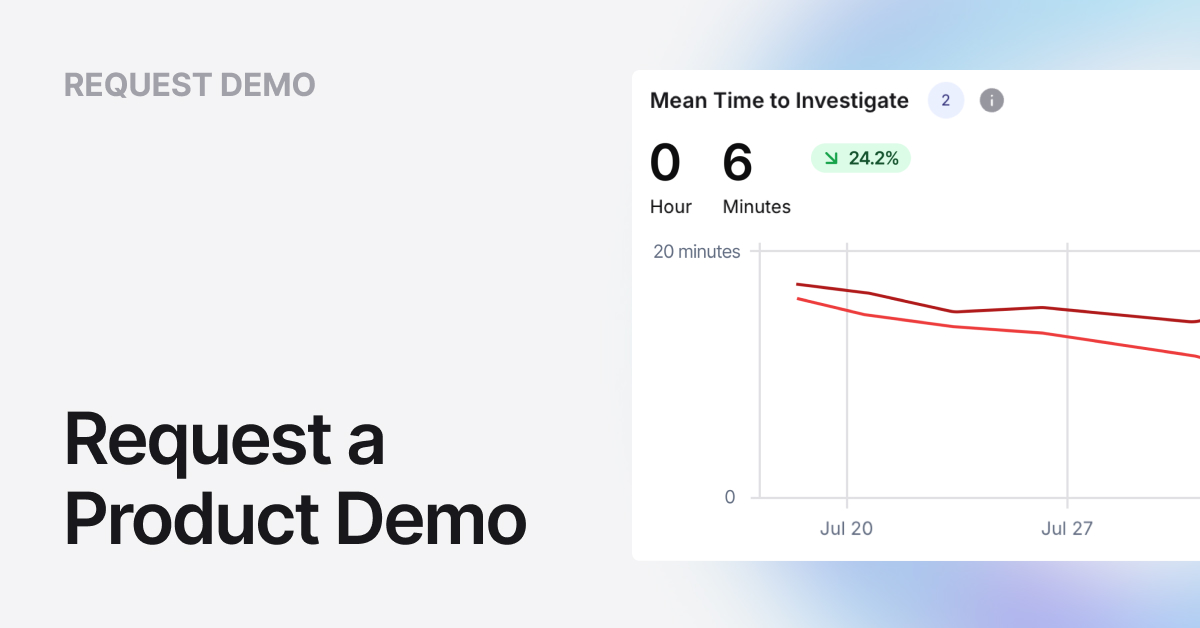Why SecOps automation matters now
Security teams today are facing a relentless storm of alerts, limited staffing, and ever-expanding attack surfaces. In fact, industry research shows most organizations are moving toward automated SOC workflows because manual processes can no longer keep up.
That’s why SecOps automation has become one of the most talked-about shifts in cybersecurity. Instead of drowning in alerts, SOC analysts can rely on automation to triage, investigate, and respond at scale. Done right, this approach changes the entire operating model of security operations.
The state of modern security operations
For years, SOCs have been defined by:
- High alert volumes with false positive rates
- Slow investigation cycles, sometimes taking days
- Talent and skills shortages, leaving analysts overworked
- Siloed tools that require constant context-switching
This traditional model is no longer sustainable. Cyber threats are faster, more complex, and more automated than ever. To keep pace, organizations need an equally automated defense.
What is SecOps automation?
At its core, SecOps automation refers to applying automated workflows and AI-driven decisioning across the detection, triage, investigation, and response lifecycle.
Key elements include:
- Automated triage: First-pass decisions made in seconds instead of hours.
- Contextual enrichment: Pulling in data from SaaS, IaaS, identity, and endpoint sources.
- AI-driven investigation: Accelerating root cause analysis with correlated timelines.
- Automated response: Triggering containment, ticketing, or notifications without waiting for manual intervention.
Benefits of SecOps automation
SecOps automation directly improves both security outcomes and SOC efficiency. By applying deterministic logic and AI-based triage, teams can dramatically reduce false positives, cutting down on wasted analyst time and ensuring that focus stays on real threats. Investigations also accelerate as automated enrichment and timeline building move analysts from alert to answer in minutes instead of hours.
Beyond efficiency, automation also expands coverage across more log sources and threat surfaces, from SaaS and IaaS to identity systems. This broader reach strengthens security while simultaneously delivering cost savings, since fewer manual cycles are needed and SIEM data storage requirements are reduced. Perhaps most importantly, SecOps automation enhances the analyst experience: rather than being bogged down by repetitive triage tasks, analysts are freed to focus on higher-value work like proactive defense and threat hunting, making their role more impactful and more rewarding.
SecOps automation use cases
Automation delivers the most value when it is directly tied to real SOC workflows. Automation becomes a force multiplier by streamlining the processes analysts rely on every day. For example, alert deduplication can merge duplicate events into a single enriched case, while suspicious login investigations can automatically cross-check geolocation, device, and MFA logs to quickly spot anomalies. Similarly, phishing triage benefits from automation that parses suspicious emails and extracts URLs without human delay.
The same applies to broader infrastructure and endpoint security. Automated detection and remediation of cloud misconfigurations reduce exposure windows, while endpoint containment workflows can isolate compromised hosts directly from detection alerts. Importantly, these automated workflows are mapped to the MITRE ATT&CK framework, ensuring alignment with known adversary techniques and keeping SOC operations both effective and threat-informed.
Overcoming barriers to adoption
While the benefits of SecOps automation are clear, many organizations struggle when it comes to implementation. Tool sprawl is one of the biggest challenges. Too many disconnected platforms can create integration gaps that limit automation’s effectiveness. Leaders also worry about “false automation,” fearing the risks of over-automating without proper context. On top of that, cultural resistance within SOC teams is common, as analysts may see automation as a threat to their roles rather than as a tool that augments their impact.
The path forward is to adopt automation gradually and strategically. Organizations can begin with low-risk, high-volume workflows, such as alert triage, where automation provides quick wins without significant downside. From there, automation can expand into more complex investigations and response activities. Crucially, building trust with explainable automation helps teams understand decisions, reduces fear, and ensures that automation is seen as a partner in driving efficiency and better security outcomes.
Best practices for successful SecOps automation
- Define success metrics early - Track mean time to detect (MTTD), mean time to investigate (MTTI), and mean time to contain (MTTC).
- Prioritize explainability - Automation must generate clear decision logs for audit and compliance.
- Integrate across data sources - From SaaS to IaaS, identity to endpoint, full context requires wide integration.
- Involve analysts in design - Automation should empower—not replace—the SOC team.
- Iterate continuously - Threats evolve, so automation playbooks must evolve too.
For a deeper dive into metrics, see SOC metrics and KPIs that matter.
The future of SecOps automation
The next wave of SecOps automation is poised to transform how security teams operate. Instead of relying solely on scripted playbooks, agentic AI models will deliver more accurate and adaptive responses. Analysts will also gain new ways of working through conversational interfaces, where incidents can be queried and explored much like a BI dashboard, making investigations more intuitive and accessible.
Looking ahead, automation will move beyond reactive alert handling to proactive risk detection, helping organizations anticipate and address threats before they escalate. Integrated MDR services will further enhance this model by pairing automation with human expertise, ensuring a balance of speed, accuracy, and context. As ISACA highlights, automation will be essential for scaling SOC capabilities to meet the growing demands of modern security operations.
Putting SecOps automation into action
SecOps automation is the foundation of the modern SOC. By cutting false positives, accelerating investigations, and expanding coverage, automation frees teams to focus on strategic defense instead of repetitive triage.
Organizations that begin now will be better positioned to keep pace with threats, scale security operations, and reduce costs.
Ready to see how automation can change your SOC? Schedule a demo and experience the impact of SecOps automation firsthand.

